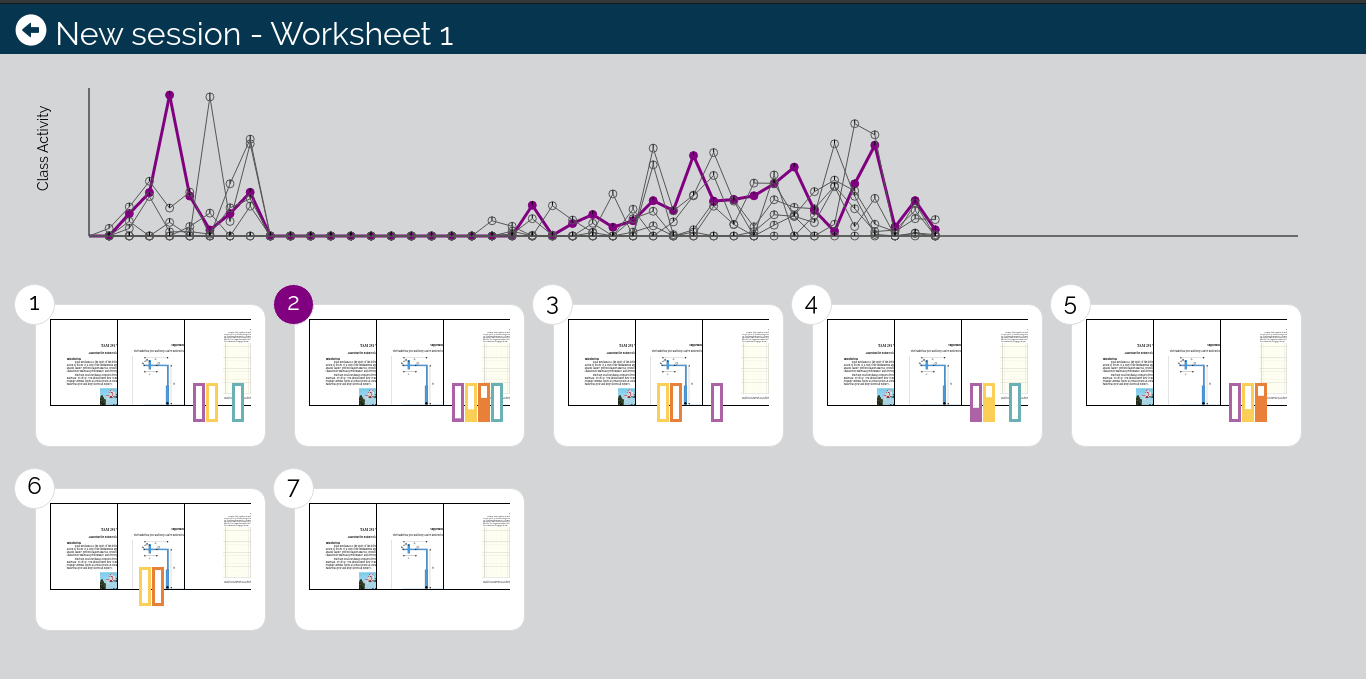Collaborative software for hand-written solutions
Collaborative learning activities provide the opportunity for students to construct their own knowledge, while helping other students simultaneously. After converting the discussion sections of two of my Mechanical Engineering classes from traditional lecture-style to collaborative learning activities, I noticed that interactions among students were substantially improved when I replaced the old arm chairs with active learning furniture. However, some students were still working on their own printed worksheet without communicating with the rest of the group, despite of the physical arrangement.

To further improve the collaboration among students, I started working with faculty from the College of Education on a project to develop a web-based application that supports the joint construction of problem solutions in a shared browser environment. During discussion sections, students have to work on the collaborative activity using tablet computers (instead of printed worksheets) that are synced among members of the same group, promoting more interactions between students. During the first years of this project, the research team collected log data from the tablets, and videos and audios from the classes. Data-driven models were developed to predict common interaction behaviors among students, such as “off-task”. We used these predictions to provide prompts to instructors in real-time during class, providing them guidance during the collaborative learning activities. This web-based application only allows for hand-written solutions using tablets.

Salim S., Lu L., Mercier E., Margotta A., Livingston E., Silva M., Tucker T., “Towards the effective implementation of collaborative problem solving in undergraduate engineering classrooms: co-designing guidelines for teaching assistants”, 127th American Society for Engineering Education Annual Conference and Exposition (ASEE 2020), 2020.
Tucker T., Shehab S., Silva M., Mercier E. “WIP: Evidence-based analysis of the design of collaborative problem-solving engineering tasks”, 126th American Society for Engineering Education Annual Conference and Exposition (ASEE 2019), 2019.
Grant: “Improving collaborative learning in engineering classes through integrated tools for instructors and students”, National Science Foundation (NSF) Cyberlearning Design and Implementation. Research team: Emma Mercier, Luc Paquette and Mariana Silva, 2016-2020.
Computer-based collaborative tool with auto-grading and immediate feedback
Most of the evidence-based practices for collaborative learning rely on the assumption of face-to-face interactions or asynchronous online activities. This research proposes to develop robust tools and pedagogies for online synchronous computer-supported collaborative learning activities.
In Fall 2020, we added collaborative features to our open-source online assessment system PrairieLearn to allow students to share the same assessment content and grades. We are currently adding the ability for groups to self-assign structured roles (e.g. POGIL), and developing a dashboard with the aim a) to help instructors track group’s progress and collaborative patterns and b) to bring more awareness to the teams during the learning process.
In our first study, we investigated the trade-offs between asynchronous (student-scheduled) and synchronous (instructor-scheduled) collaborative learning. We performed a quasi-experimental study in two courses — Computer Architecture and Numerical Methods — to compare the effects of asynchronous collaborative learning without structured roles to synchronous collaborative learning with structured roles. We use a data-analytics approach to examine how these approaches affected the student learning experience during formative collaborative learning assessments. Teams in the synchronous offering made higher scoring submissions (5-10% points better on average), finished assessments more efficiently (11-16 minutes faster on average), and had greater equality in the total number of submissions each student made (for example, significant increase of 13% in the mean equality score among all groups).
Herman G., Jiang Y., Jiang Y., Poulsen S., West M., Silva M., “An Analytic Comparison of Student-Scheduled and Instructor-Scheduled Collaborative Learning in Online Contexts”, Proceedings of the 2022 American Society for Engineering Education Conference (ASEE 2022), 2022.
Internal Grant: “FACA project: Facilitating Adoption of Collaborative Activities using computer-based tools”, Strategic Instructional Innovations Program (SIIP) at UIUC. Research team: Mariana Silva, Abdu Alawini and Geoffrey Herman, 2020-2023.
External Grant: “Enhancing Equity and Access Via Digitally-mediated Collaborative Learning Experiences”, National Science Foundation (NSF) Improving Undergraduate STEM Education (IUSE), Research team: Mariana Silva, Geoffrey Herman and Matthew West, 2021-2024.